Adding pink and white flowers to your garden brings a natural beauty that changes with the seasons. Soft pinks add warmth and charm, while white flowers create a fresh, balanced look. Together, they brighten up any space and make it more inviting.
With so many varieties to choose from, these flowers can fit into any garden style, whether you prefer classic blooms or something more unique. They are easy to grow and keep your garden lively year-round.
Here are 16 pink and white flowers that will add color and interest to your outdoor space.
Dianthus (Dianthus spp.)
Dianthus is a delightful ground cover known for its small, fringed flowers in shades of pink, red, and white. Blooming from spring through summer, these flowers have a light, spicy fragrance, often compared to cloves.
They add vibrant color to the garden and serve a practical purpose in erosion control, making them an excellent choice for slopes and rock gardens. Dianthus thrives in full sun and well-drained soil, rewarding gardeners with long-lasting blooms. Regular deadheading helps extend the flowering period, keeping this low-maintenance plant fresh and vibrant throughout the season.
Bleeding Heart (Lamprocapnos spectabilis)
Bleeding Heart is an enchanting perennial that produces delicate, heart-shaped flowers along gracefully arching stems. These unique blossoms, typically pink with white tips, bloom in late spring, adding an elegant charm to shady garden spots.
This plant prefers rich, well-draining soil that remains consistently moist, making it ideal for woodland gardens or shaded borders. While it can reach heights up to 15 inches, Bleeding Heart naturally goes dormant in summer heat, retreating underground until the following year.
Petunia (Petunia spp.)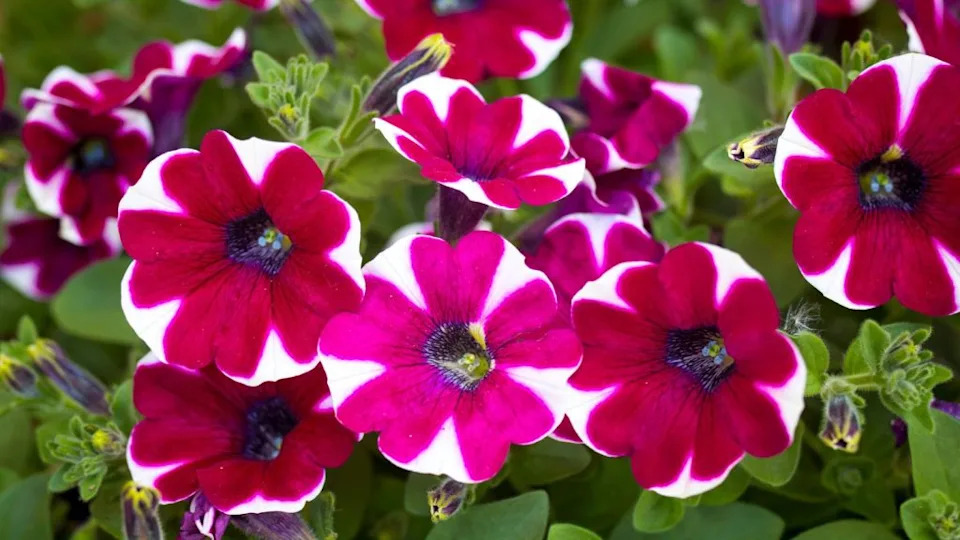
Petunias are beloved for their abundant, trumpet-shaped blooms that brighten gardens, hanging baskets, and containers from spring through fall. Available in an incredible array of colors, including pinks, purples, and whites, petunias are easy to grow and thrive in full sun.
They prefer fertile, well-drained soil and benefit from regular watering, though they are somewhat drought-tolerant once established. Hybrid varieties often produce unique color patterns and ruffled petals, though they may not grow true from seed. With their fast-growing nature and extended bloom time, petunias make an excellent choice for adding continuous color to any outdoor space.
Morning Glory (Ipomoea spp.)
Morning Glory is a fast-growing vine known for its large, trumpet-shaped flowers that open in the morning and close by afternoon. Available in shades of pink, purple, blue, and white, these cheerful blooms attract hummingbirds and butterflies.
Morning Glory thrives in full sun, requiring well-drained soil and regular watering to maintain its lush, trailing growth. This vigorous climber quickly covers trellises, fences, and arbors, making it a favorite for vertical gardening. Although typically grown as an annual, it can self-seed and return in warmer climates, creating a beautiful, low-maintenance display year after year.
Dahlia (Dahlia spp.)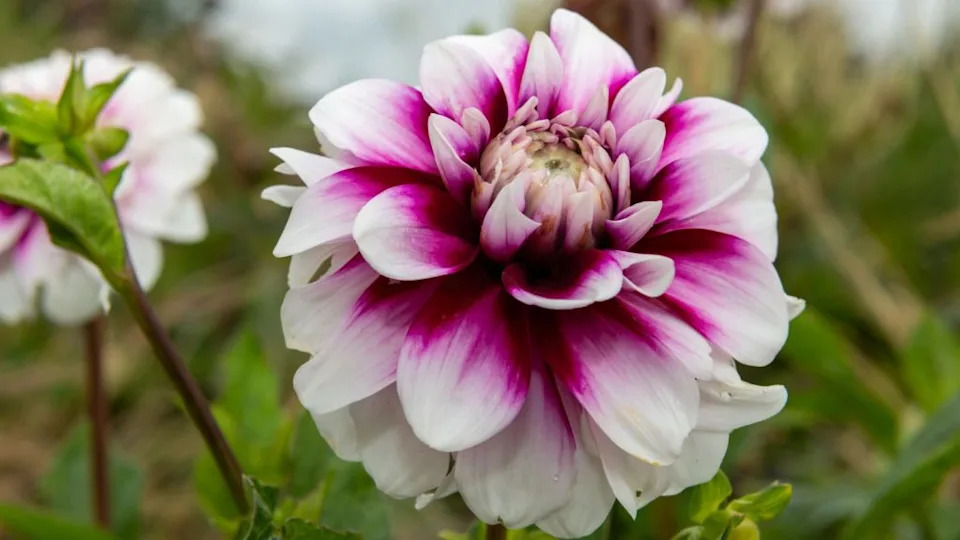
Dahlias are prized for their spectacular, long-lasting blooms that come in an array of colors, shapes, and sizes. These striking flowers range from delicate, daisy-like forms to large, dinner-plate-sized blossoms, making them a showstopper in any garden.
Dahlias prefer full sun and well-drained soil, flourishing best when planted after the last frost. They are perennials in Zones 8-11 but require digging and overwintering in colder climates.
Weigela (Weigela Florida)
Weigela is a deciduous shrub that produces many trumpet-shaped flowers in pink, red, or white shades. Blooming in late spring, it attracts pollinators such as bees and hummingbirds.
This hardy shrub thrives in full sun, producing the most vibrant flowers and dense foliage. Its arching branches and lush green leaves make it an excellent addition to mixed borders or as a foundation planting.
Phlox (Phlox spp.)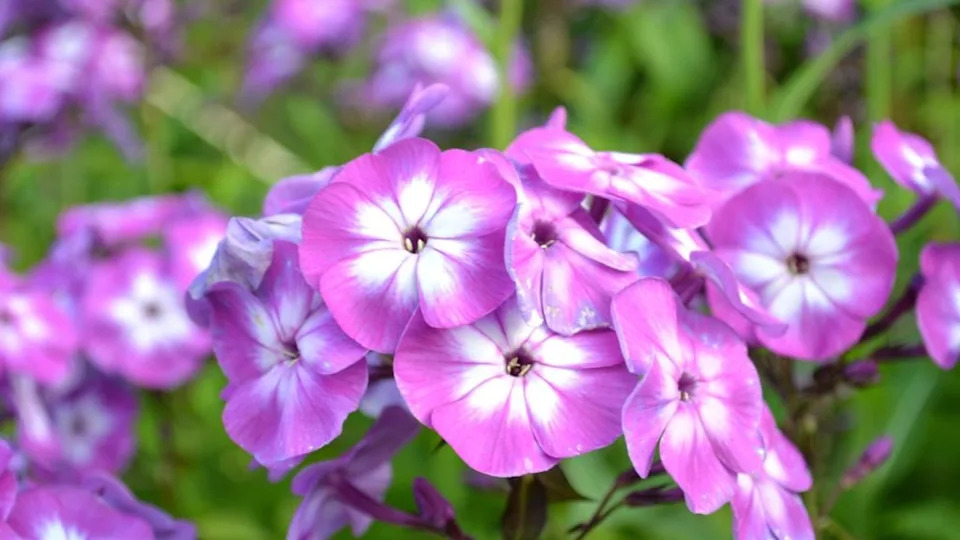
Phlox is a charming perennial known for its clusters of star-shaped flowers that bloom in vibrant shades of pink, purple, and white. Its sweet fragrance and nectar-rich blooms make it a magnet for butterflies and hummingbirds. Phlox thrives in full sun to partial shade and prefers moist, well-drained soil.
Garden phlox varieties can grow up to four feet tall, while creeping phlox spreads low to the ground, making it ideal for rock gardens and borders. With its long bloom period from spring through summer, phlox adds lasting color and beauty to any landscape.
Pink Amaryllis (Hippeastrum spp.)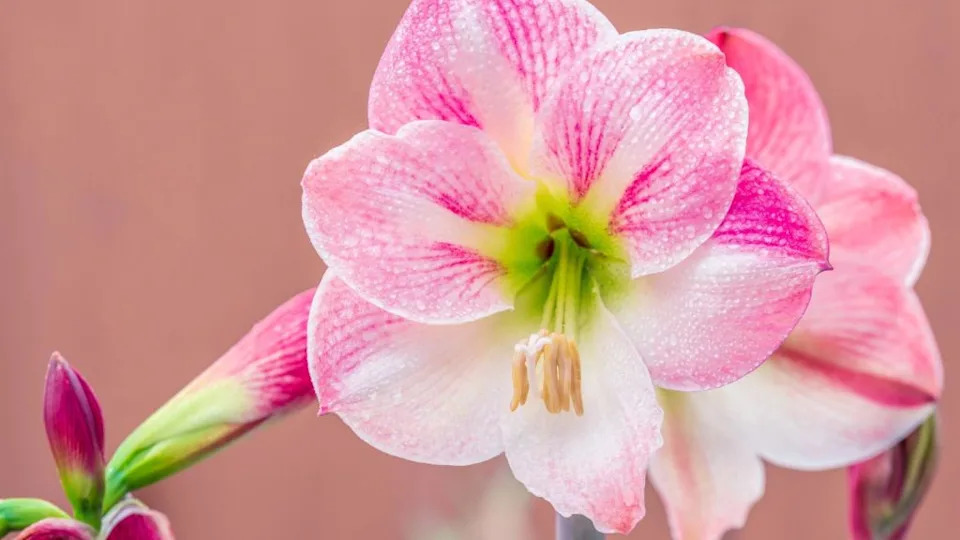
Pink Amaryllis is a stunning flowering plant that produces large, trumpet-shaped blooms in shades of blush to deep pink. These flowers often grow indoors as holiday centerpieces but thrive in warm outdoor gardens. Amaryllis prefers bright, indirect light and well-drained soil.
It typically blooms in late winter or early spring, with each sturdy stem producing multiple flowers. After blooming, the plant’s strappy green leaves continue growing, helping to replenish energy for the next flowering cycle.
Roses (Rosa spp.)
Roses are classic garden staples, admired for their timeless beauty and fragrant blooms. Available in nearly every shade of pink and white, they bring elegance and romance to any landscape. Roses thrive in full sun and require well-drained soil enriched with organic matter.
Tulips (Tulipa spp.)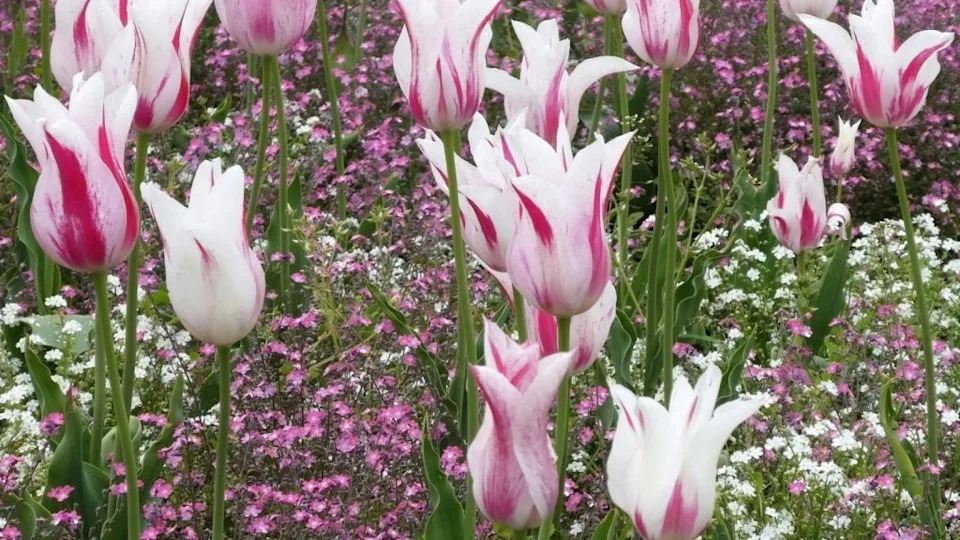
Tulips are one of the most beloved spring flowers. They offer cup-shaped blooms in a stunning range of colors, including pinks and whites. These hardy bulbs are planted in fall and burst into bloom in early spring, bringing vibrant color after the winter months. Tulips prefer full sun and well-drained soil, making them ideal for flower beds, borders, and containers.
Milkweed (Asclepias spp.)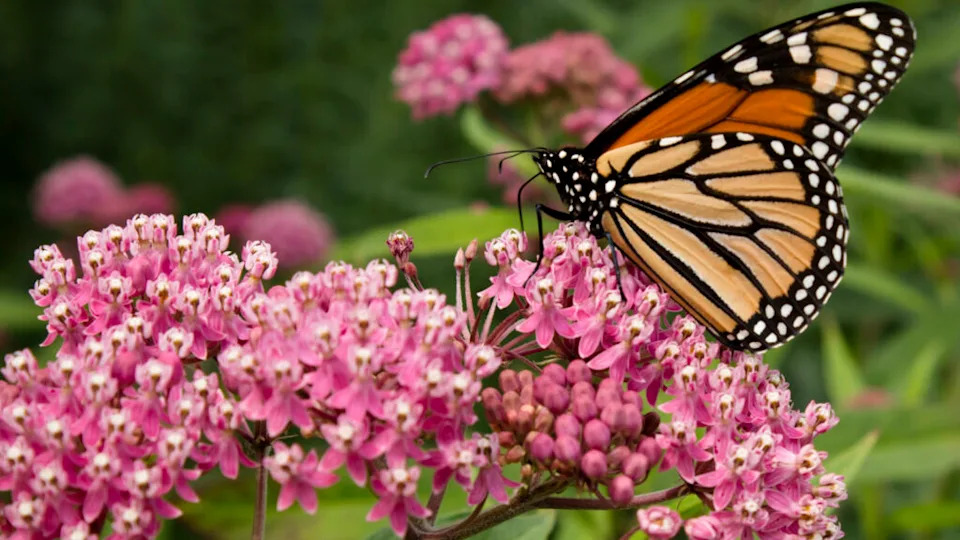
Milkweed is an essential plant for monarch butterflies. It serves as a host plant for their caterpillars and provides nectar for adult butterflies. Its clusters of small, star-shaped flowers bloom in shades of pink, white, and purple, adding beauty to pollinator gardens.
Thriving in full sun and well-drained soil, milkweed is a hardy, drought-tolerant plant that requires minimal care. It supports monarch populations and attracts bees and other beneficial insects, making it a valuable addition to any wildlife-friendly garden.
Foxglove (Digitalis spp.)
Foxglove is a striking biennial or perennial known for its tall spikes covered in tubular, bell-shaped flowers. Blooming in late spring to early summer, these blossoms come in soft pinks, purples, and whites, adding vertical interest to shaded garden spaces. Foxglove prefers moist, well-drained soil and thrives in Zones 4-10.
Eucomis (Pineapple Lily)
Eucomis, commonly called Pineapple Lily, produces unique, spiky flower clusters topped with a tuft of leaves, resembling a miniature pineapple. Blooming in late summer through early autumn, its flowers come in white, pink, and purple shades. This tropical-looking plant thrives in full sun and well-drained soil, adding exotic beauty to flower beds and containers.
Foamflower (Tiarella spp.)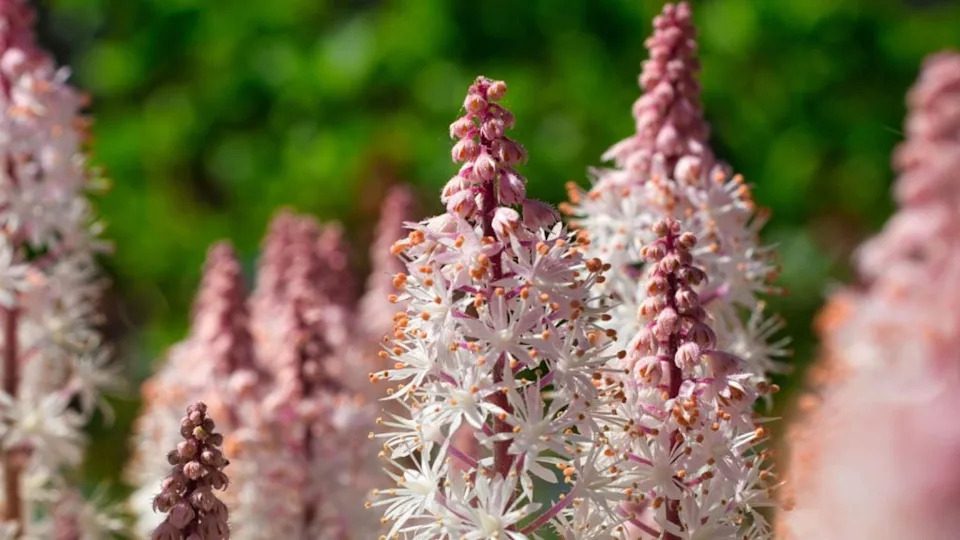
Foamflower is a charming woodland plant with delicate, airy blooms in shades of white or soft pink. Its attractive, lobed foliage remains lush throughout the growing season, providing texture to shade gardens. Hardy in Zones 3-9, foamflower thrives in moist, well-drained soil and pairs beautifully with hostas and ferns.
Bougainvillea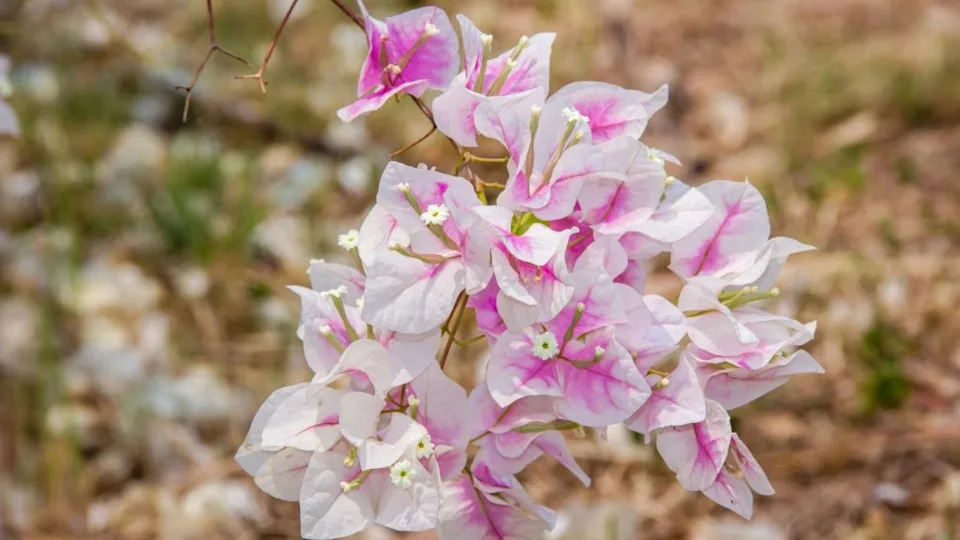
Bougainvillea is a tropical vine known for its vibrant pink, red, and purple bracts surrounding small white flowers. Thriving in full sun, it can grow as a climbing vine, shrub, or ground cover. Once established, it is highly drought-tolerant and makes a stunning statement in warm-climate gardens.
Begonia
Begonia features beautiful, heart-shaped leaves and delicate flowers. It’s a resilient choice for adding a splash of color to the shaded parts of the garden.


Comments are closed.